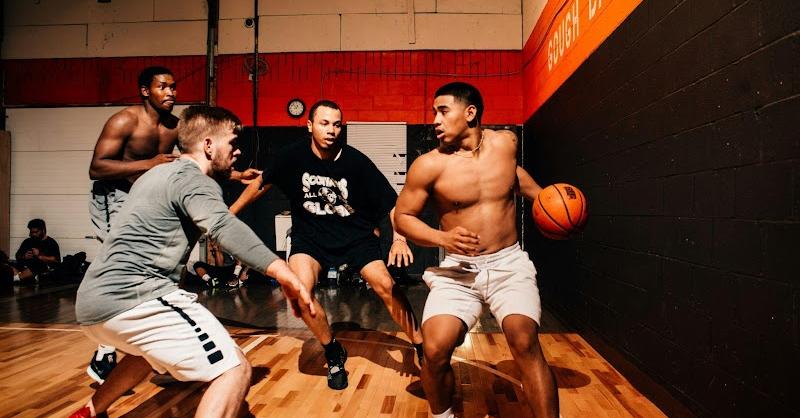Participating in multiple sports provides athletes with a myriad of benefits that extend beyond the playing field. By engaging in different athletics, players develop a comprehensive skill set that enhances physical capabilities, mental resilience, and social skills. This not only improves athletic performance but also prepares athletes for a wide range of life challenges. The commitment to multiple sports disciplines requires effective time management, strategic planning, and rigorous health management, building a well-rounded character and a disciplined approach to life’s demands, as Caleb Reedy explains.
Benefits and Skills of Multi-Sport Participation
Participating in multiple sports, such as football, basketball, and baseball, offers athletes a unique set of advantages. Engaging in different sports helps develop a broad spectrum of physical abilities, enhancing overall agility, strength, and endurance. This training can lead to improved performance across all sports as skills from one can complement and enhance abilities in another. The quick lateral movements and planning required in basketball, for example, can improve a football player’s agility and tactics.
Athletes who widen their sports experience a change that can refresh an athlete’s mental state, reducing the risk of burnout associated with focusing on a single sport. This variety keeps the training exciting and challenging. Moreover, the social skills developed in team sports like football and basketball are priceless. These settings foster communication, teamwork, and leadership skills—qualities that are transferable to any group setting, including professional environments outside of sports.
Training Integration and Time Management
Integrating training for football, basketball, and baseball requires a well-thought-out plan that considers each sport’s unique demands and skills. By creating a cohesive training regimen, athletes can enhance their skill set more efficiently. Careful scheduling ensures that the physical demands of each sport are met without overtraining. This not only maximizes physical development but also hones strategic thinking as athletes learn to switch gears between the sports’ demands.
Managing time effectively is crucial for athletes juggling multiple sports. Prioritizing training sessions according to the seasonal peak of each sport helps maintain a balance. During overlapping seasons, it can be beneficial to focus on maintaining fitness in one sport while peaking in another. This allocation of time helps athletes remain competitive across all their sports without sacrificing their performance.
Seasonal Planning and Maintaining Energy
Balancing the competitive calendars of football, basketball, and baseball is no small feat. It requires meticulous attention to the timing of seasons and major competitions. By anticipating the high points of each season, athletes can prepare to peak at the correct times, ensuring they are in top form when it matters most.
Athletes must also master the art of maintaining peak energy. Understanding when to push hard in training and when to conserve energy for key competitions can make a substantial difference in an athlete’s overall performance. Techniques such as periodization, where training intensity is varied throughout the year, play a crucial role in maintaining an athlete’s physical and mental condition.
Health Management for Multi-Sport Athletes
Navigating the demands of multiple sports means athletes must be vigilant about their health management. Nutrition plays a vital role, providing the energy needed for peak performance and the nutrients necessary for recovery. Athletes should focus on a diet that supports their rigorous schedules, emphasizing proteins for muscle repair, carbohydrates for energy, and fats for long-term fuel. Alongside proper nutrition, ensuring adequate rest periods is critical. Sleep is a powerful tool for recovery, aiding in the repair of tissues and the consolidation of skills learned during training.
Injury prevention is another cornerstone of health management for multi-sport athletes. Regular check-ups and adherence to proper techniques are preventive measures that help keep athletes off the sidelines. When injuries occur, it’s crucial to follow a structured rehabilitation program that aligns with an athlete’s sports commitments, promoting effective recovery without compromising performance in other sports.
Mental and Psychological Aspects
The mental and psychological challenges of competing in multiple sports are as demanding as the physical ones. By developing resilience, athletes learn to navigate the ups and downs of different sports. This adaptability becomes a mental asset over time, enhancing an athlete’s ability to face and overcome challenges.
Mental toughness is forged in the pressures and competitive scenarios of sports, equipping athletes with the fortitude to handle high-stress situations. Another aspect often overlooked is the ability to handle pressure in different competitive settings. Athletes who compete in multiple sports encounter different team dynamics, coaching styles, and competition levels.
Guidance for Multi-Sport Success
For athletes new to multi-sport participation, the journey starts with understanding the terrain ahead. Navigating through the complexities of managing multiple sports involves learning from those who have successfully balanced similar commitments. Mentors play a pivotal role in guiding young athletes, providing insights that are crucial for early development and long-term success. These experienced individuals offer strategies that help beginners manage their time, focus on skill development, and understand the importance of recovery.
Mentors also foster a supportive atmosphere that encourages athletes to explore their full potential in multiple disciplines. This encouragement is vital, as it helps athletes maintain their motivation and enthusiasm across different sports. Such support not only boosts performance but also ensures that the athletes enjoy their sports, which is crucial for their continued participation and success.

